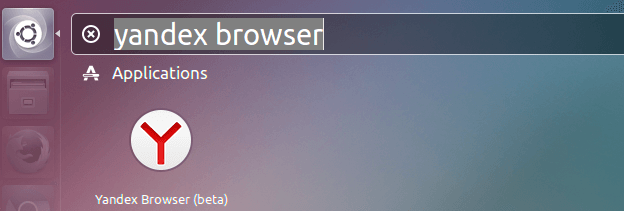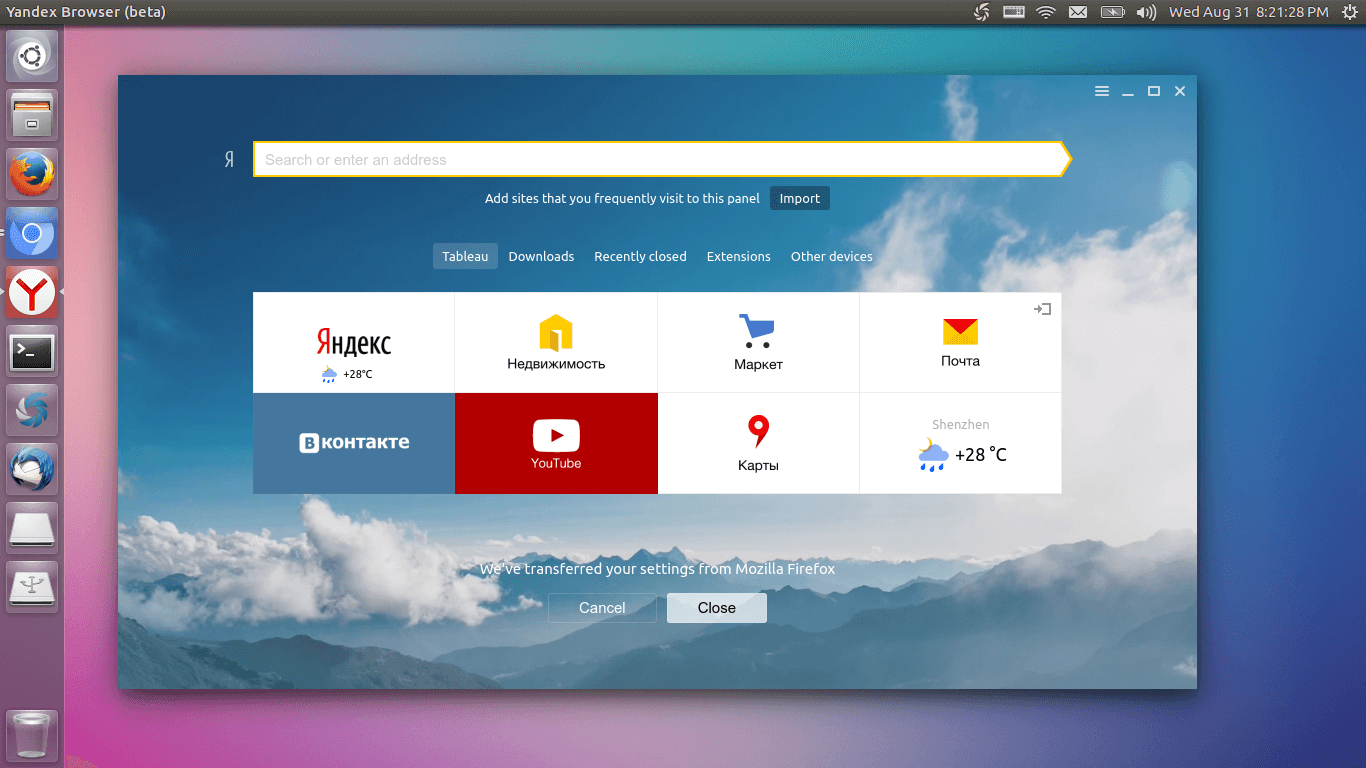Install Yandex Browser on Debian, Ubuntu, Fedora, OpenSUSE, Arch Linux
Yandex browser is a Chromium-based Internet browser developed by Russian search engine provider, Yandex, available for Linux, Mac OS X, Windows, Android and iOS.
Yandex browser features:
- Sync bookmarks, extensions, browser data across your devices.
- Modern and clean user interface
- Uses Blink engine for fast browsing experience
- Compatible with Chrome Web store and Opera add-ons
- Automatically enables Opera Turbo mode for faster page loading on slow Internet connection
- Built-in pepper flash player
- Uses DNSCrypt technology to prevent DNS spoofing or cache poisoning attacks
Enable sudo for Standard User Account on Debian
Some commands in this tutorial are prefixed with sudo. If your user account isn’t in the sudoer list, you can use the following command to switch to root user, assuming you know the root password.
su -
If you want to add the standard user account into sudoer list, run the following command as root. Replace username with your actual username.
adduser username sudo
Then install sudo utility.
apt install sudo
Log out and log back in for the change to take effect. From now on, the standard user can use sudo to manage the system.
Install Yandex Browser on Debian 8 Jessie, Ubuntu 16.04 LTS, Linux Mint 18
To get the latest updates, it’s recommended to install Yandex browser from its official APT repository. First create a source list file for Yandex browser
sudo nano /etc/apt/sources.list.d/yandex-browser.list
Add the following line to the file.
deb [arch=amd64] http://repo.yandex.ru/yandex-browser/deb beta main
Press CTRL+O, then press Enter to save the file, CTRL+X to exit out of the file. The we also need to download and import the GPG key so that packages downloaded from this repository can be authenticated.
wget https://repo.yandex.ru/yandex-browser/YANDEX-BROWSER-KEY.GPG sudo apt-key add YANDEX-BROWSER-KEY.GPG
After that, update local package index and install Yandex browser.
sudo apt update sudo apt install yandex-browser-beta
Once installed, you can start it from Ubuntu Unity Dash or your favorite application menu.

or from the command line.
yandex-browser

Install Yandex Browser on Fedora, OpenSUSE
Go to Yandex browser download page to download the RPM package. Or you can use wget utility to download it in terminal.
wget https://cache-ams06.cdn.yandex.net/download.cdn.yandex.net/browser/yandex/ru/beta/Yandex.rpm
Once downloaded, go to the download folder and execute the following command to install it.
Fedora: sudo dnf install Yandex.rpm OpenSUSE: sudo zypper in Yandex.rpm
Install Yandex Browser on Arch Linux, Manjaro, Apricity OS, Antergos
yaourt yandex
To install Chrome extensions, simply go to chrome.google.com/webstore. To install Opera add-ons, go to addons.opera.com.
That’s it! I hope this tutorial helped you install Yandex browser Linux version on your machine. And as always, if you found this post useful, then subscribe to our free newsletter or follow us on Google+, Twitter or like our Facebook page. Thanks for visiting!



Para Manjaro 17 utilice yaourt -S yandex-browser-beta
hello after sudo nano /etc/apt/sources.list.d/yandex-browser.list
I receive : name file for write /etc/apt/sources.list.d/yandex-browser.list
what to do? ctrl +o?
I think you need to press Enter, then Ctrl+O
Hello,
I wish your suggestions would work.
After all you say in the tile that it is for debian ( amongst others)
As it were – One can not install yandex browser on debian using this tutorial. It’s as simple as that.
even the list command is not recognized or should i skip it by your opinion?
Any chance of help?
Hi Henry,
I just tried the commands on Debian 9 and it worked without any issue.
To save a file in Nano text editor, press Ctrl+O, then press Enter. To exit nano, press Ctrl+X.
Thank you for your support, Xiao,
I learnt how to save nano THANKS TO YOUR teaching while installing on ubuntu.
Hm… basic sudo command in terminal it tells me that it is not recognised.
Terminal should be opened by ctrl + alt+ T and it does not. To open it i just type terminal…. in “activities”. 🙂
I will log to debian (9) now and try again… so frustrating. Here, in Ubuntu 18, your instruction works 100% every time.
Allow me to let you know how i went.
Thank you again
Henry
Hi Henry,
On Debian, the normal user by default can’t use
sudo. You need to add the user tosudoerlist in order to use it. I have added the instructions at the beginning of this tutorial.Hi, Xiao,
It’s Henry again 🙁
I tried the first “sudo……list” command and it returned:
Bash: sudo command not found.
The debian after few days visibly changed (without me knowing) the video card driver… because at first all was normal and then some funny screens with lines or squares were visible but finally it would boot to normal debian screen.
As it is a graphic driver problem (in ubuntu works correctly) i do not believe it has anything to do with that bloody “sudo”.
However, i downloaded ” live” version of debian relaying on the system to download itself what is needed during installation stage. It did, obviously since i can boot to it. But could it be that it did not download correctly or omitted something by an error??? I would not mind to buy the package from somewhere. There is an offering for debian+14 disks package for petty $34 from USA but they did not even answer my email.
I do not mind ubuntu but the teamviewer is installing there only with one way contact. That is only the reason why i went for debian.
Thank you for having me. I am so very sorry to bother you… I don’t know what to do next.
Cheers
Henry
Well, but now i want to unisntall everything i did in debian and i don’t know how to do this since many steps … Thanks!
Thanks. This is the best instruction set for installing Yandex Browser.
I am using majaro 19 and i don’t have yaourt. I tried installing it but its just too complicated
Brilliant and easy solution that works. Thank you for the solution.